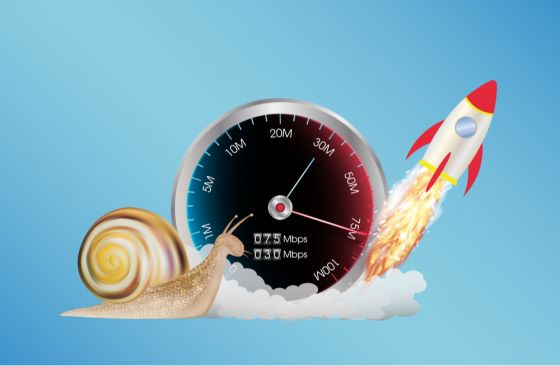As the Ultra-Fast Broadband (UFB) network continues to be rolled out around the country, consumers may be considering how much data they need, and whether opting for an unlimited plan is ultimately the way to go.
UFB is delivering broadband speeds significantly faster than ADSL/VDSL offerings, and faster downloads in turn bring about the capacity to consume far greater amounts of data in a shorter period of time.
Meanwhile, many online services require ever-greater amounts of data, with video streaming services in particular having the potential to quickly eat into a data allowance, and a growing array of smart devices found in the average household are contributing to increased collective data consumption.
As such, consumers signing up for a UFB plan should consider how their data usage may grow in kind with the faster broadband speeds on offer, while also taking into account the data requirements of the various devices used in their household, and keep in mind potential future data requirements.

UFB rollout
The Ministry of Business, Innovation and Employment’s (MBIE) most recent quarterly update tracking progress of the UFB rollout, for the quarter to September 30 this year, shows that the UFB build is 87 per cent complete.
The MBIE advises that the target is for 87 per cent of New Zealanders to have UFB access by the end of 2022, while it has an overall target of 99.8 per cent of New Zealand’s population to have access to improved broadband by the end of 2023.
According to the MBIE, the average speed of UFB services is 189 Mbps, as consumers continue to migrate to higher-speed plans – and, harnessing the greater speeds on offer, the capacity is there for households to see their data use climb.
Stats NZ figures released last year highlight the trend that has emerged towards greater data caps over the last five years, which has occurred in concert with the UFB rollout and the increasing popularity of data-intensive services such as video streaming.
The Stats NZ figures show that as at June 30, 2018, broadband connections with unlimited data caps made up over 70 per cent of all broadband connections in New Zealand, with the number of connections with an unlimited data cap having grown from 155,000 in 2014 to 1,322,000 last year.

Data requirements: How much is enough?
There is the potential for data usage to jump over the course of a billing period when taking advantage of the higher speeds on offer from UFB, and consumers should keep in mind the cumulative data requirements of the range of services being used in their household.
The amount of data required from one month to the next can vary significantly dependent upon the services being accessed, and it should be kept in mind that usage can quickly spike when adding new services to the mix.
Video streaming is one of the more popular data-intensive services delivered over high-speed connections, with the amount of data required having the potential to rise significantly when streaming higher quality HD or UHD video.
Providing an indication of the amount of data that will be required for video streaming:
- Netflix advises that watching TV shows or movies uses about 1 GB of data per hour for each stream of SD video, and up to 3 GB per hour for each stream of HD video, rising to 7 GB per hour for UHD, with downloading and streaming consuming a similar amount of data.
- Lightbox advises that video quality depends upon connection speed, with it unable to determine exactly how much data consumers will go through, while watching at full quality, consumers will be using up to 3 GB per hour, with its data saver feature using up to 0.5 GB per hour.
Among other potentially data-intensive activities, online gaming could make a dent in data caps (if downloading the game to start with, this may initially require a lot of data, and updates can also require a significant amount of data), while the cumulative impact of a range of activities, from streaming music to video calling, will add up over the course of a billing period.
Of course, adding to data requirements is the ever-increasing array of devices connecting to the internet in a typical household, and it is worthwhile keeping in mind the data usage of these respective devices, from smartphones to smart TVs.
Meanwhile, it is also worthwhile considering your uploading data requirements, which can span a range of activities, from video calling to uploading photos and videos, to using devices such as security cameras.
Types of plans on offer
In determining the type of data cap your household requires, it is well worth taking into consideration your historical usage if available, with retailers potentially providing customers a monthly breakdown of their usage.
It may also be worthwhile using services such as online data calculators to provide additional insights into usage – and, when using these types of services, consumers should, of course, consider how their data use may potentially rise when they have access to higher speed broadband.
While unlimited data plans have become increasingly popular, there are a variety of different data caps on offer from retailers, catering to different levels of usage – and, before signing up to a plan, it is worthwhile considering the range of options available.
Across different retailers, the data caps offered can vary greatly, from under 100 GB through to unlimited allowances, and along with the speed of the plan will contribute to its total monthly cost.
In addition to data caps and speed, consumers should also keep in mind the following when signing up to a plan:
- Contract length – is the contract for a fixed term (such as 12 or 24 months), or can it be cancelled at any time (from one month to the next)?
- Termination fee – if it is a fixed-term contract, is there a termination fee for ending the contract early, and how much is it?
- Bundling – is there the potential to bundle your broadband with other services, such as electricity services, and what sort of discount is offered?
- Incentives – are there any sign-up incentives, such as discounts or free equipment?
- Router – does the plan come with a free router, and what sort of router is provided? Is it preferable to use your own router?
- Changing plans – is it possible to change/upgrade your plan if required?
- Data cap – what happens when a data cap is reached? Is there the potential to buy extra data during a billing period?
Of course, if in doubt about any aspects of a retailer’s offering, it is worthwhile contacting the retailer directly.
Image credits: Siixth/Shutterstock.com, Alphaspirit/Shutterstock.com, Sashkin/Shutterstock.com


Share this article